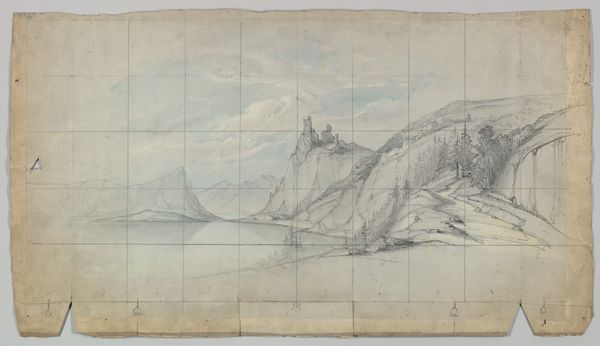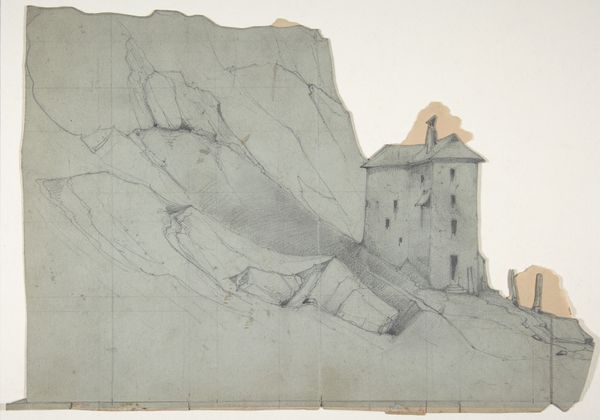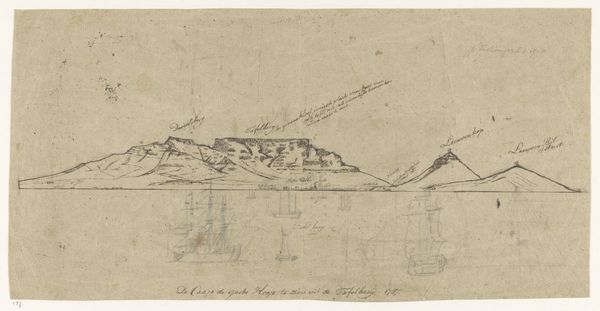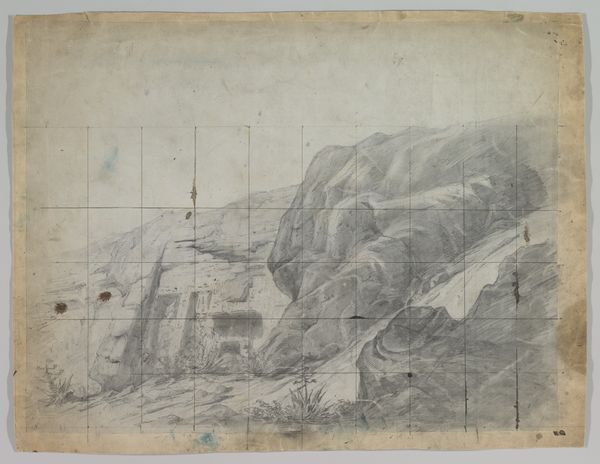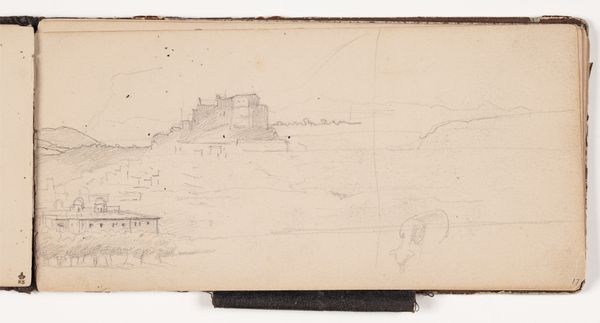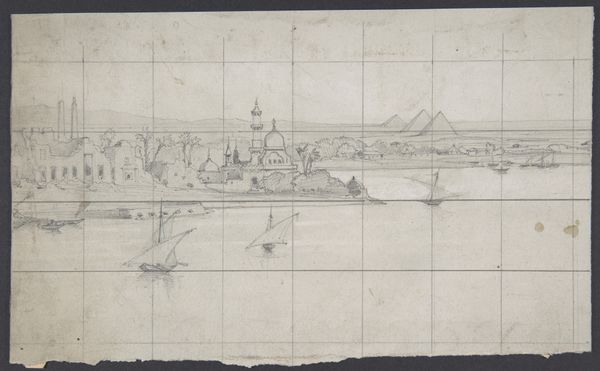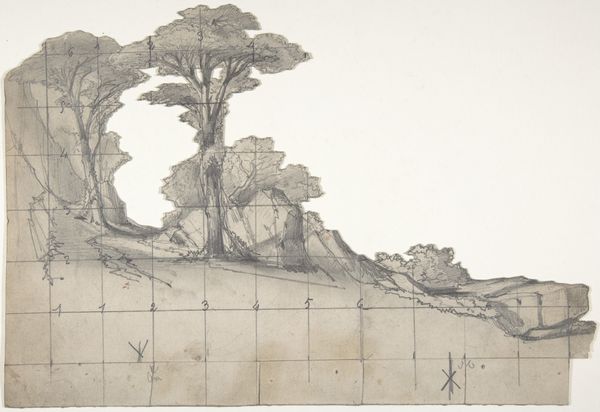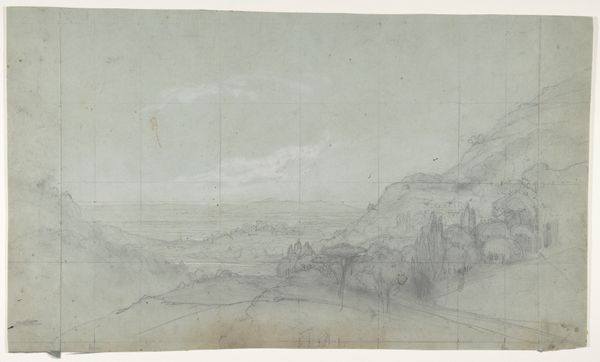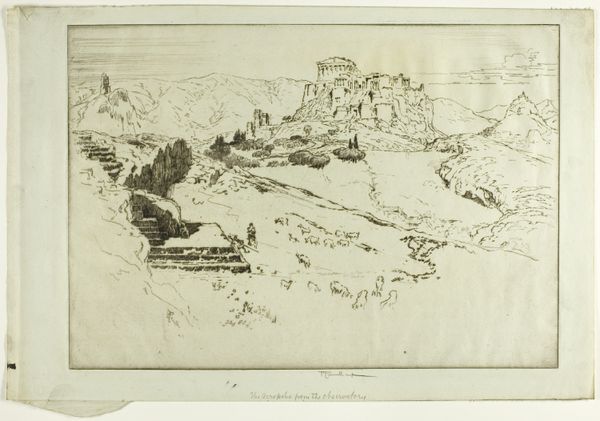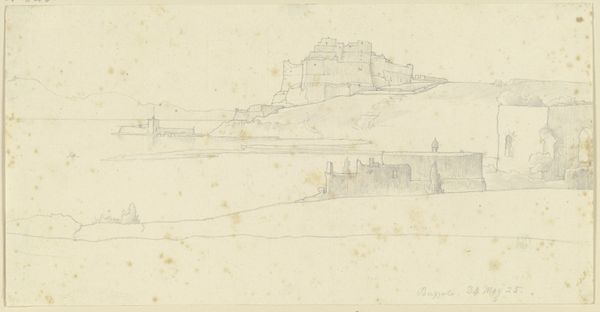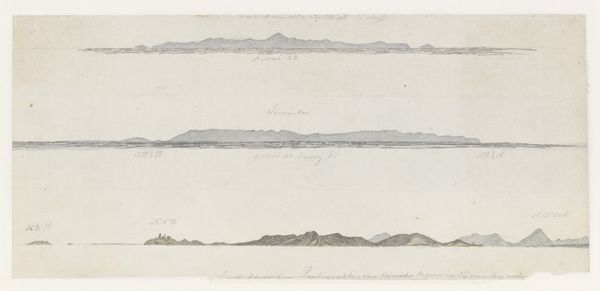
Design for a Stage Set at the Opéra, Paris 1830 - 1890
0:00
0:00
Dimensions: Irregular sheet: 9 5/16 x 14 1/4 in. (23.7 x 36.2 cm)
Copyright: Public Domain
Eugène Cicéri rendered this stage set design for the Paris Opéra with graphite on paper. The commanding mountain, crowned with a castle, speaks to a potent archetype: the elevated fortress, a symbol of power and security, yet also of isolation. This motif echoes through history, from the acropolis of ancient Greece to medieval European castles, each a physical manifestation of authority and defense. Consider how such structures appear in the collective imagination, often embodying both promise and potential imprisonment. The mountain itself, a place of refuge, in Romanticism transforms into a site of sublime terror. Think of Caspar David Friedrich's wanderers gazing into the abyss; the landscape as a mirror to the soul’s tumultuous depths. The path leading up the mountain, barely visible, invites introspection. It recalls the arduous journey of self-discovery or the trials one must undergo to reach enlightenment. The image taps into primal emotions—the yearning for safety, the thrill of ascent, and the inevitable confrontation with one's own vulnerabilities. These symbols remind us of culture's persistent effort to give form to our deepest longings and fears.
Comments
No comments
Be the first to comment and join the conversation on the ultimate creative platform.
